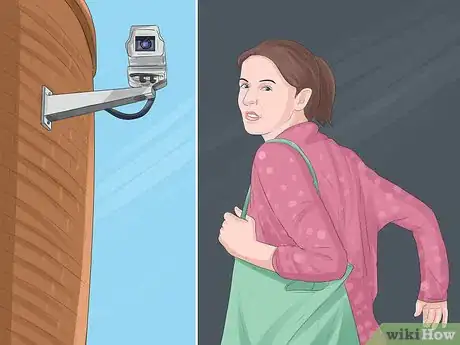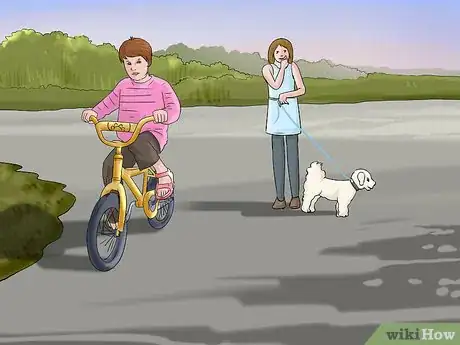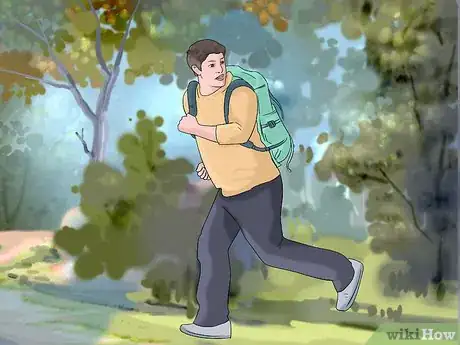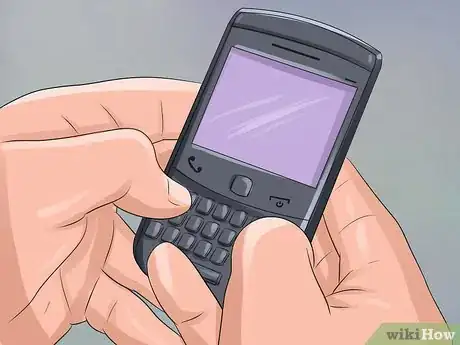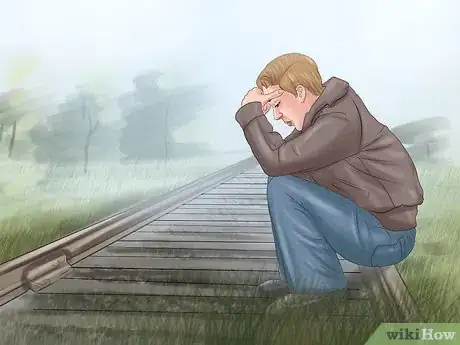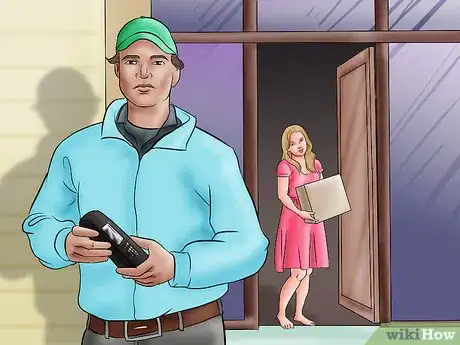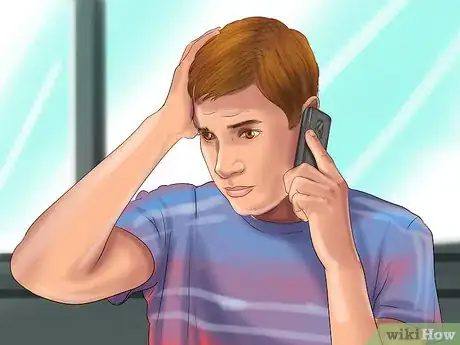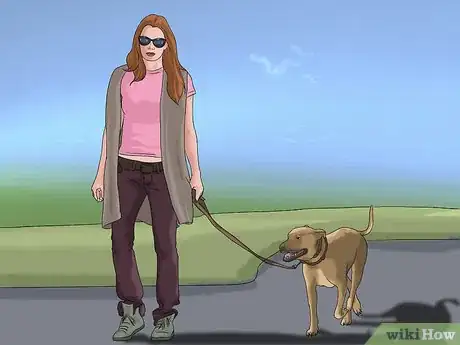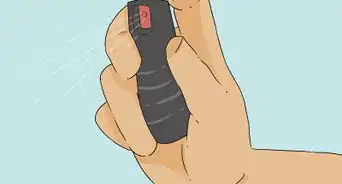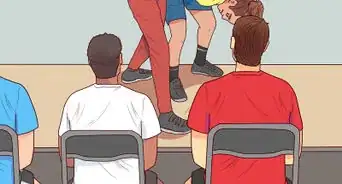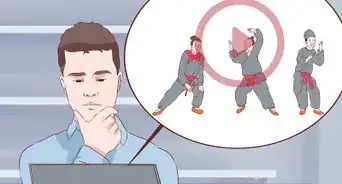This article was co-authored by Saul Jaeger, MS. Saul Jaeger is a Police Officer and Captain of the Mountain View, California Police Department (MVPD). Saul has over 17 years of experience as a patrol officer, field training officer, traffic officer, detective, hostage negotiator, and as the traffic unit’s sergeant and Public Information Officer for the MVPD. At the MVPD, in addition to commanding the Field Operations Division, Saul has also led the Communications Center (dispatch) and the Crisis Negotiation Team. He earned an MS in Emergency Services Management from the California State University, Long Beach in 2008 and a BS in Administration of Justice from the University of Phoenix in 2006. He also earned a Corporate Innovation LEAD Certificate from the Stanford University Graduate School of Business in 2018.
This article has been viewed 78,526 times.
Increasing your situational awareness can give you an opportunity to escape or mitigate the danger presented by people or scenarios that could cause harm to you or those around you. Having increased situational awareness does not mean looking for trouble; in fact, it means quite the opposite. The most effective way to win a fight is to avoid it all together.
Steps
Assessing Your Environment
-
1Assess your surroundings for threats. The first step to increasing your situational awareness is to assess your surroundings in full. Look around you and take account of the type of situation you are in. Different environments will require different levels of focus to maintain high situational awareness.[1]
- Take a few moments to focus on each of your senses to better grasp your surroundings. Pay attention to what you're seeing, smelling, hearing, and feeling in your environment.[2]
- A city environment presents very different dangers and distractions than a rural one.
- By identifying the type of environment you are in, you can better prepare yourself to keep a look out for possible risks.
-
2Be aware of what should be normal in your situation. The environmental baseline is what you’ve experienced in similar environments and situations. Determine what should be considered normal sounds, behaviors and sights in your current situation so you have a frame of reference to compare unusual behavior to.[3]
- The environmental baseline in a wooded area is often fairly quiet and usually interrupted only by the sounds of insects, birds, and the wind passing through the trees. It also may be dimly lit and is often sparsely populated by other people.
- The environmental baseline on a busy city street would include the sounds and sights of multiple vehicles and crowds of people talking at a normal volume for the level of ambient noise.
- Environmental baselines are based on your experiences. Establishing them requires you to consciously consider environments you are familiar with so as to be able to distinguish situations or behaviors that are abnormal.
Advertisement -
3Identify and gauge the danger of elements around you. Once you have established what you feel the environmental baseline of your surrounding area is, look around to identify and consider any possible sources of dangerous situations.[4]
- Look for people that are behaving in a manner that is outside the norm, based on your past experiences and by comparison to those around them.
- Identify individuals that may be armed with weapons of opportunity, which are things that may not be considered a weapon, but could do serious harm to you or those around you. Common examples could be baseball bats or chains.
- Look for weapon imprints on people’s clothing. When one carries a concealed weapon, it often leaves what is commonly referred to as an “imprint” or outline of parts of the weapon in the clothes. Look near the waist band of suspicious individuals to try to determine if they are carrying a concealed weapon.
- Look for bags, suitcases or similar things that shouldn’t be left alone in crowded areas but have been. Leaving unattended bags in public places is a common delivery method for explosives.
-
4Use your imagination to plan for different situations. While it’s not always good to let your imagination run wild about possibly dangerous situations, you can use it to establish scenarios in your mind and plan for ways to address them.[5]
- If you notice a group of suspicious individuals heading in your direction, think about what you might do if they attempted to attack you or those around you.
- Look for ways out of your current environment if you needed to leave quickly.
- Imagine someone drawing a weapon or attacking you in your current situation. What can you do now to make it less likely? What will you do if it happens anyway?
Controlling Your Focus and Attention
-
1Don't assume abnormal behavior doesn't pose a threat. Because most people live fairly safe lives, we tend to believe things are going to work out. People often wait to respond to abnormal behavior because they are unwilling to recognize it as a threat. "Normalcy Bias" is the act of ignoring prospective threats because it seems unlikely that a dangerous situation might occur..[6]
- Take indications of danger seriously. Don’t tell yourself that what you are seeing “must be normal.”
- Approach each situation as though it could become dangerous. This will help you overcome the normalcy bias.
-
2Don’t get distracted. When you focus on one thing so hard that you are too distracted to identify potential threats around you, that is referred to as “focus lock.” Focus lock is a perfectly normal thing to do, but it can significantly hinder or reduce your situational awareness.[7]
- A common example of focus lock causing a dangerous situation is looking at your phone instead of the road while driving.
- On a hiking trail, you may be so distracted by the sights and sounds ahead of you that you don’t notice a snake near your feet in the brush.
- When you catch yourself experiencing focus lock, draw your attention back to your environment and any potential threats around you.
-
3Pay attention to time. The passage of time is an important part of situational awareness. Keeping track of the time can help you identify trends in people’s behavior that may not otherwise have seemed unusual to you. It also can help you to prevent fatigue by knowing how long it’s been since you last ate or rested.[8]
- If you notice someone walking laps around an area at regular intervals, they may be waiting for something to happen. There’s nothing inherently dangerous about that, but it’s an element that noticing could help you avoid dangerous situations.
- Keep track of how long it has been since you last saw the people you are with. Waiting for your child outside of a public bathroom, for instance, is a situation where you may want to keep track of how long it’s been since you’ve seen them.
-
4Fight against complacency. In the military, a common phrase used in training is “complacency kills.” Complacency occurs when you become so comfortable in your current situation that you no longer work to actively identify possible threats around you.[9]
- If you feel your mind wandering or catch yourself experiencing focus lock, bring your attention back to the present moment and the situation at hand.
- Remind yourself that dangerous scenarios can occur anywhere, including environments that you feel very comfortable in like your home or a restaurant you go to often.
-
5Don’t let fatigue set in. Fatigue makes it extremely difficult to remain attentive and focused. When you’re hungry, dehydrated or tired you grow distracted. Reduced blood sugar levels caused by prolonged periods of not eating can make you just as groggy as a lack of sleep.[10]
- Take good care of yourself by getting enough sleep and eating well and often.
- Notice the signs of fatigue as they set in: you may find it harder to pay attention to things, notice your temper is shorter, or your vision may blur slightly.
-
6Use your peripheral vision to identify threats. Sometimes you may draw unwanted attention by looking directly at a possible threat. In some extreme cases, a possible threat may become a real one if they interpret your looking at them as engaging them in some way. Because of this, practice looking at things from the sides of your vision.[11]
- Some individuals may approach you or even become hostile if they notice you looking directly at them.
- Using your peripheral vision means any dangerous individuals in your vicinity won’t know exactly what you’re looking at, allowing you a slight tactical advantage.
Being Aware in Dangerous Situations
-
1Try to predict upcoming events around you. By establishing a situational baseline, you create an idea in your head of what normal should look, sound, and smell like where you are. Use that baseline to predict events that will occur around you so they don’t take you by surprise.[12]
- If you see a truck pull into a parking lot near you, you can predict that you may hear the sounds of its doors opening and closing or the beeping of its backup alarm.
- If you are driving behind a school bus, you can predict that it may stop to let children off in front of you at some point.
- If you notice people behaving in an aggressive manner toward one another, you may predict that they could fight, which may be a sign that you should exit the area.
-
2Trust your gut feelings. Sometimes you’ve identified the situational baseline in your mind, assessed any possible threats around you, have a strategy to get away from anything that may happen, but you still can’t shake a sense that something’s wrong. Trust that feeling.[13]
- You may be unaware of how your body is interpreting stimuli surrounding you, but humans have evolved to sense danger. If you feel uneasy, but don’t have objective reason to, trust that feeling.
- In a classic case of “it’s better to be safe than sorry,” trusting your gut about a situation and leaving may prove to have been unnecessary, but it’s better to be wrong about it a hundred times than to have been right once without acting.
EXPERT TIPSaul Jaeger is a Police Officer and Captain of the Mountain View, California Police Department (MVPD). Saul has over 17 years of experience as a patrol officer, field training officer, traffic officer, detective, hostage negotiator, and as the traffic unit’s sergeant and Public Information Officer for the MVPD. At the MVPD, in addition to commanding the Field Operations Division, Saul has also led the Communications Center (dispatch) and the Crisis Negotiation Team. He earned an MS in Emergency Services Management from the California State University, Long Beach in 2008 and a BS in Administration of Justice from the University of Phoenix in 2006. He also earned a Corporate Innovation LEAD Certificate from the Stanford University Graduate School of Business in 2018.Police Captain, Mountain View Police Department
 Saul Jaeger, MS
Saul Jaeger, MS
Police Captain, Mountain View Police DepartmentOur Expert Agrees. If you're walking down the street and you see someone walking towards you and you feel like something is wrong, trust that instinct. Don't just ignore it because you don't want to offend the other person, or you could end up putting yourself in danger. It's not logical, but it happens all the time.
-
3Position yourself to easily identify threats. Where you stand can be extremely important to your ability to maintain situational awareness. If you are in a crowded environment with too many people to keep track of, for instance, you may want to position yourself with your back to a wall so you can see anyone approaching you as they come.[14]
- Different situations may require different positioning, but always try to put yourself in a place where you would be able to identify any possible threats as they approach.
- Positioning yourself near exits may make it easier for you to quickly escape a situation as it occurs.
-
4Immediately identify dangerous factors of those who enter your personal space. In crowded city streets, it will likely be more common for people to come into your personal space that it might be in a grocery store or at a park. Personal space is commonly considered to be a circle around you at arm’s length. If anyone comes into that area (close enough to make contact with you) quickly identify any possible threat they may pose.[15]
- Look for signs of a weapon either in their hands or on their body if you can see one.
- Look at their face to see if they are focused on you or if they are simply passing by.
- Notice where their hands are and what they are doing with them. If they are going to attack you, their hands will likely be balled into fists or possibly could be carrying a weapon.
References
- ↑ http://besurvival.com/tips-and-tricks/10-ways-to-improve-your-situational-awareness
- ↑ Sandra Possing. Life Coach. Expert Interview. 13 August 2020.
- ↑ http://www.itstactical.com/intellicom/mindset/3-effective-techniques-to-train-your-situational-awareness-and-recognize-change/
- ↑ http://besurvival.com/tips-and-tricks/10-ways-to-improve-your-situational-awareness
- ↑ http://www.huffingtonpost.com/avital-zeisler/situational-awareness-a-k_b_4846700.html
- ↑ http://www.itstactical.com/intellicom/mindset/3-effective-techniques-to-train-your-situational-awareness-and-recognize-change/
- ↑ http://www.itstactical.com/intellicom/mindset/3-effective-techniques-to-train-your-situational-awareness-and-recognize-change/
- ↑ http://besurvival.com/tips-and-tricks/10-ways-to-improve-your-situational-awareness
- ↑ http://besurvival.com/tips-and-tricks/10-ways-to-improve-your-situational-awareness
- ↑ http://besurvival.com/tips-and-tricks/10-ways-to-improve-your-situational-awareness
- ↑ http://www.huffingtonpost.com/avital-zeisler/situational-awareness-a-k_b_4846700.html
- ↑ http://besurvival.com/tips-and-tricks/10-ways-to-improve-your-situational-awareness
- ↑ http://besurvival.com/tips-and-tricks/10-ways-to-improve-your-situational-awareness
- ↑ http://www.huffingtonpost.com/avital-zeisler/situational-awareness-a-k_b_4846700.html
- ↑ http://www.huffingtonpost.com/avital-zeisler/situational-awareness-a-k_b_4846700.html
